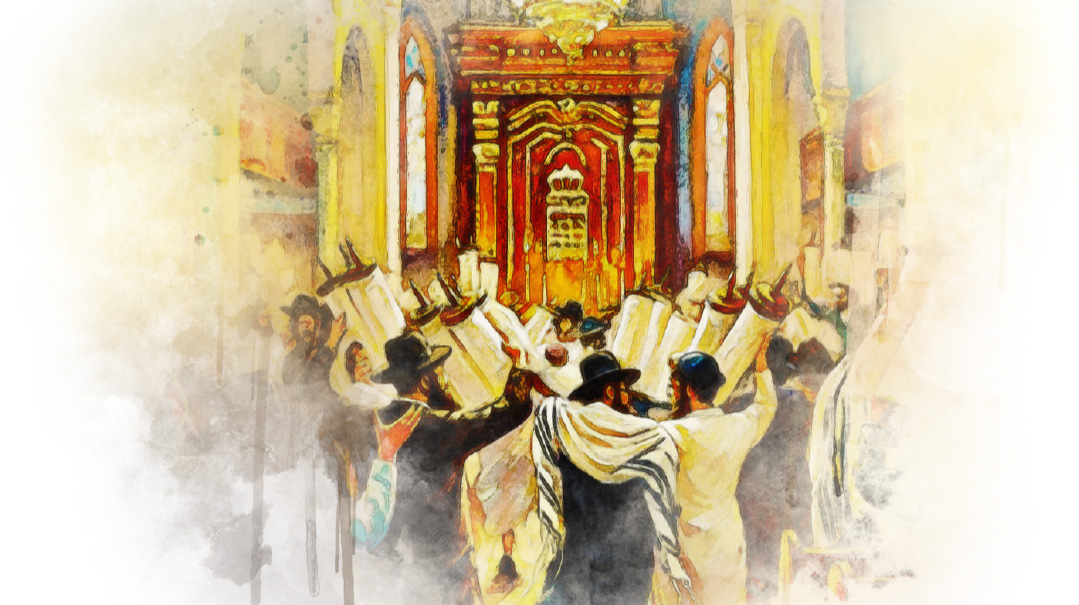The Mysterious Number Eight

It is a step beyond the natural, the number that transcends nature

How great is the distance between the number seven and the number eight? On one level, the distance is negligible: only one digit away. But on another level, in classical Jewish terms, they are literally worlds apart.
AS the Maharal (1526–1609) points out in many of his works, seven represents this world, as exemplified by the seven days of creation. That number permeates discussions of this physical universe. There are seven gates to the netherworld; seven different punishments descend onto this world for seven types of sins (Avos V:10); seven days of various tumah defilements, including the seven-day Red Heifer-Parah Adumah defilement; seven Noachide mitzvos, and dozens of other sevens that point to it as the this-material-world number.
The number eight, by contrast, represents that which is nonphysical, spiritual, and otherworldly. It is a step beyond the natural, the number that transcends nature.
For example, says the Maharal, the bris milah of a newborn infant must take place ideally only on the eighth day, and not on any other day. That a newborn male comes into this world uncircumcised is perfectly natural. The bris milah ushers him and his soul into a realm beyond the natural, via the number eight.
Or consider Chanukah. It marks an eight-day miracle not only because the vial of oil miraculously lasted that long, but also the reverse: perhaps the vial lasted eight days because eight is the realm of transcendence beyond the normative laws of nature, beyond the reality of this world.
Similarly, after counting seven weeks from Pesach — seven times seven — we celebrate the giving of the transcendent Torah on the 50th day, which begins week number eight.
It is therefore not surprising that when King David sought to demonstrate the sanctity of the Torah and its Hebrew alef-beis, he gave us Psalm 119 with its intricate weavings and interplay of eights: Eight different verses for each letter of the alef-beis, with identical first letters for each verse in each unit of eight.
With the number eight we enter a new reality, unfettered by earthly limitations. It suggests infinity, a step beyond the finite world of seven, a new beginning in a different realm. Thus, in its separation from the merely physical, eight is the numeral of holiness — for this is the essence of holiness: a separation from the physical.
Similarly, the clothing of the Kohein Gadol in the Beis Hamikdash is not happenstance. Since he is the very embodiment of sanctity, he is commanded to wear specifically shmoneh begadim, eight different items of clothing, when he performs the sacred Yom Kippur avodah.
Seven and eight are thus two separate worlds. The essence of seven is the earthly and the profane, while the essence of eight is the spiritual and the sacred.
Now, why this disquisition on these numbers? What has it to do with us? Everything.
Consider: We correctly refer to the last day of Succos as Simchas Torah, because on that day we simultaneously celebrate both the completion of the Torah and the very beginning of the Torah at Bereishis. But in the Torah, that day is not called Simchas Torah, but Shemini Atzeres, literally the “Eighth [Day] Pause.” (Shavuos, seven weeks after Pesach, is also called Atzeres [Vayikra 23:36] but space does not permit further discussion here.)
Shemini Atzeres, the eighth day, is really not the last day of Succos, but a separate Yom Tov unto itself (Bamidbar 29:35). There are no physical mitzvos attached to it: no shofar, no matzos, no succah, no esrog, no lulav. Perhaps this is because the message of Shemini Atzeres is closeness with the Creator, for after the holy days of Tishrei, G-d says to Israel, “itzru alai yom echad — pause ( itzru/atzeres) with me one more day” (cf. Succah 55b). This eighth day transcends the physical, for there can be no physical mitzvah that can embody within it this concept of the full identity of finite man with the Infinite G-d. It is only our own very selves engaging with G-d in an intimate setting, like a father and child spending a few moments together before saying farewell to one another as the year and all its busyness and distractions looms over them. This yearning to be alone with our Creator — at His invitation! — cannot be concretized through anything physical. It is unadulterated spirituality, pure transcendence.
This eighth day, the Shemini Atzeres, the day beyond the seven days of Succos, is clearly the least physical and material of all the Yamim Tovim. From the this-world-seven we move upward to the-otherworld-eight.
But the seven and the eight — one pulling lower towards earth, the other pushing higher towards heaven — remain in eternal conflict, a never-ending struggle against one another.
One wonders if it is far-fetched to suggest that perhaps the earthly, physical seven reached its nadir last October, on a day which Am Yisrael will never forget: the secular seventh day of that secular month. For us, that day’s brutal massacre of Jews will always be the actualization and incarnation of the awesome Tochacha/Admonition sections of Devarim and Vayikra. For the slaughter took place not merely on the secular seventh day, but specifically on the holy eighth day which is Shemini Atzeres. In effect, it was almost as if the seven and the eight, the physical and the spiritual, the profane and the sacred, the earthly and the transcendent, brushed against one another on that fateful day.
And an evanescent thought flits across the mind: dare one suggest that at a certain mysterious level beyond our comprehension, perhaps this was an assault of the physical seven against the holiness of the eight — the this-worldly against the otherworldly — and that on that terrible day, the seven seems to have won a terrifying victory over the eight?
But tragic as it was, we can be comforted that it was only a temporary victory. For in our travail, we remember one overriding fact: that Shemini Atzeres, after all, involves ends and beginnings — the ending of the Torah is followed immediately by the beginning of the Torah. And Shemini Atzeres involves Simchas Torah hakafos, dancing in circles around the Torah, with circles representing endlessness and infinity. If the seven was victorious on that day, it was only one chapter. The full narrative has yet to unfold, new beginnings are approaching, and on that glorious day the transcendent eight will permanently triumph over the transient seven.
And this is why, on this Shemini Atzeres/Simchas Torah, we will dance with fervor as we remember the souls taken from us last year. Our hakafos will have more passion than ever before, because we know that events that defy nature in our tragedies will also be redeemed by events that defy nature in our triumphs. —
(Originally featured in Mishpacha, Issue 1033)
Oops! We could not locate your form.






